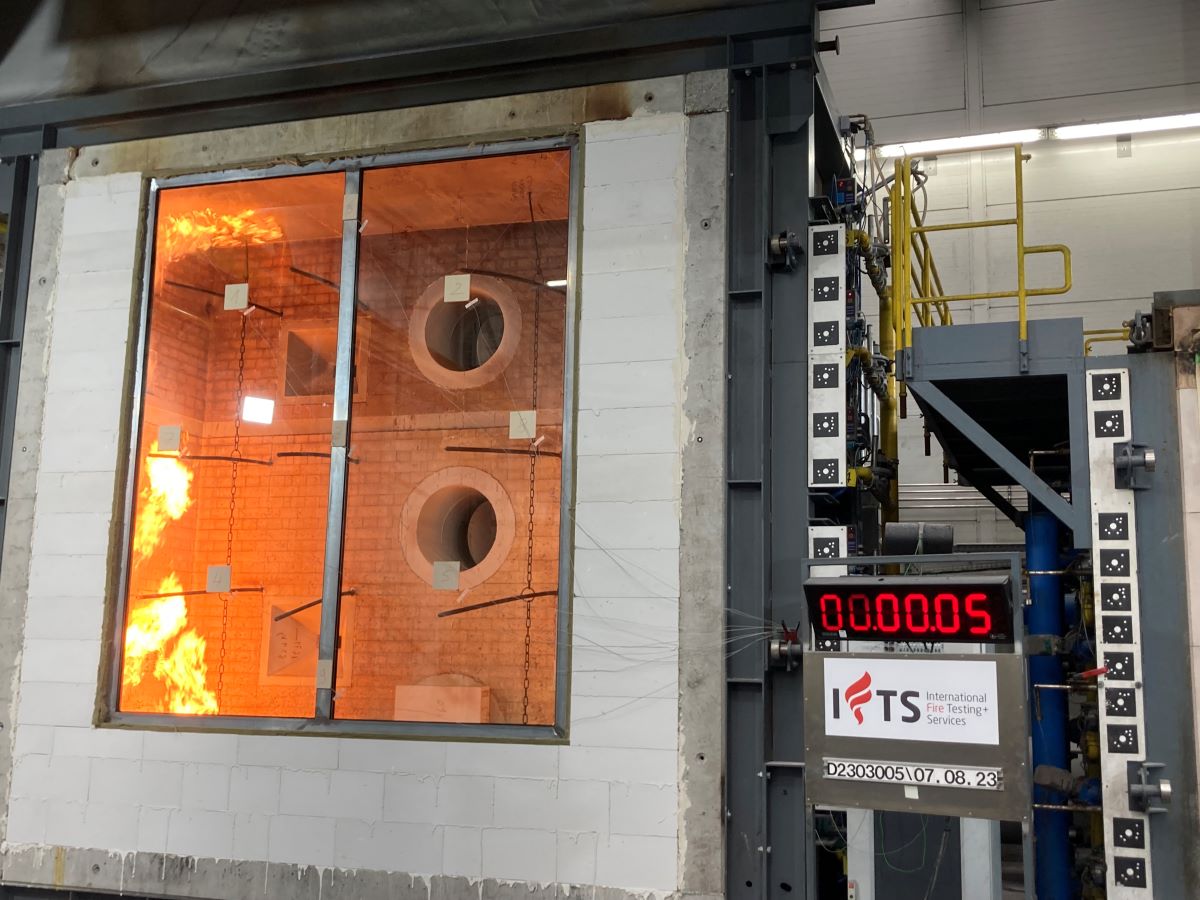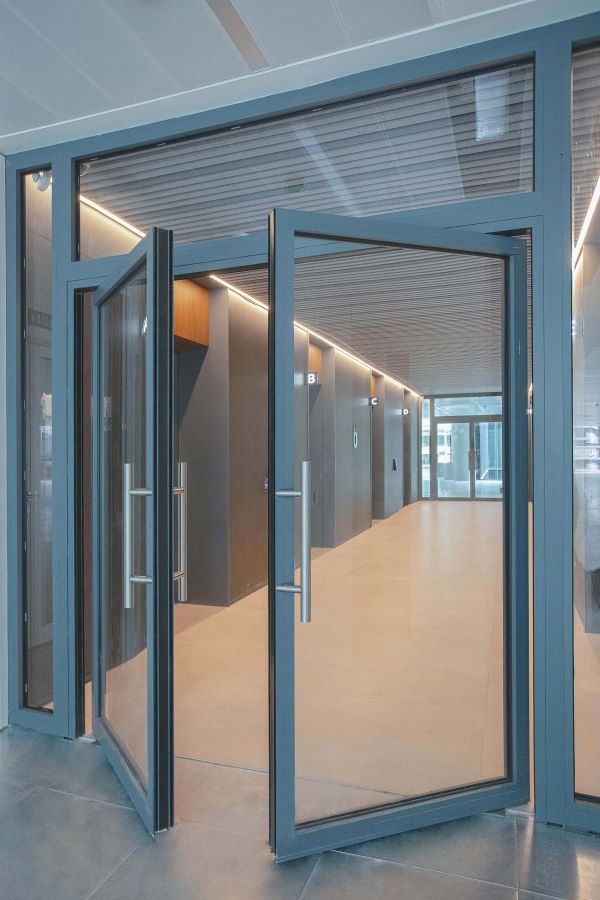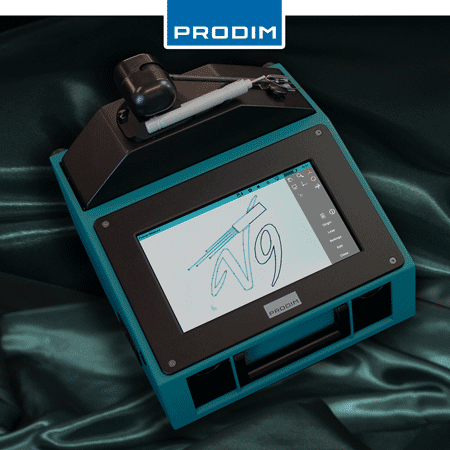Blazing Trends: The Surging Demand for Fire-Rated Glass
How aesthetics, technology and sustainability are shaping the future of fire-rated glass in an increasingly multi-functional world

Above: Two-hour fire-resistive, blast-rated curtain wall at a U.S. Army hospital on the West Coast. Photo by Safti First.
In recent years, the design community has driven the evolution of fire-rated glass and glazing technology from a code-required architectural product to a multifunctional solution—with unprecedented glass sizes, superior optical clarity and multifunctional capabilities such as blast, hurricane, ballistic, detention, thermal and decorative, among others, in addition to being fire-rated. Allowing designs that would have been nearly impossible decades ago, fire-rated glass is finding use in many of today’s design-forward architectural elements, including curtain walls, full wall panels, stairwell enclosures, floors and doors, and more.
Commercial fire-related accidents
The steadily rising number of fire-related accidents in non-residential buildings is also driving demand for multifunctional fire-rated glass. Source: U.S. Fire Administration
20%
increase between 2012–2021
70%
increase in deaths
21%
increase in dollar loss

Above: Fire tests were conducted to ensure that the Contraflam One product can withstand extreme heat and force. Photo courtesy of Vetrotech Saint-Gobain North America.
Progressive expansion thanks to rising trends

Poised to grow 10% and reach $16.26 billion by 2033, according to market research firm Fact.MR, the fire-rated glass market is being propelled by various industry trends, including improved aesthetics and design options, and advancements in manufacturing technologies and techniques. Urbanization growth and increasingly stringent building codes and standards are inducing designers to implement proactive measures to mitigate damage and protect occupants, while meeting increasingly ambitious aesthetic and performance goals, especially in educational, healthcare and governmental settings.
“Fire-rated glass stands poised to deliver unprecedented versatility in achieving building owners’ expectations for multifunctional glass solutions,” says Michael Miller, sales manager, Vetrotech Saint-Gobain North America. “For years, the glass industry has responded to architects’ requests for multifunctional products. Building owners want glass in more places to maximize the use of natural daylight while minimizing heat gain. The goals are often to open up sightlines for greater security and connection to exterior views while also protecting against a growing range of potential threats. Glass manufacturers have innovated to meet these needs with ever-thinner products, allowing architects greater design flexibility.”
And the increased demand for products that offer energy efficiency and sustainability, or contribute to net-zero architecture goals, are a primary focus for building owners and architects.
“Sustainability is a big conversation point, and we’re mindful of it, just like other manufacturers in our space,” says Devin Bowman, general manager, Technical Glass Products. “There are some challenges as many of the materials we use are unique, required for the specialty nature of our products.”
“Beyond fire-rated glass’ primary purpose, we’re being asked to meet sound transmission, forced-entry, energy-efficiency and environmental sustainability requirements. All the while, seamlessly integrating into the overall design,” says Jerry Cucchi, sales, Aluflam North America.
“Multifunctional performance features aren’t always about [addressing] a threat. In many cases, it could be sound attenuation requirements, enhanced thermal codes or strictly aesthetic features that are crucial to the architect’s design, and ultimately, the functionality of the space for the occupant,” says Tim Nass, vice president of sales, Safti First.

Above: Multifunctional, fire-rated glazing can enhance the overall functionality of secure entry vestibules. Photo courtesy of Technical Glass Products.
Creating clarity amid industry challenges

Balancing safety, aesthetics and functionality remains a central challenge in fire-rated glass production. The inclusion of fire-rated materials is increasingly becoming a standard requirement in building design and construction. As products and testing constantly evolve, ensuring that fire-rated glass meets specific fire safety standards and regulations requires rigorous testing and certification.
“The regulatory framework is both a blessing and a curse. It ensures that new products are properly tested and certified, which is required for fire-rated glass, but that in itself slows down the process of innovation and adds cost,” says Rob Botman, general manager, Glassopolis.
“When it comes to a life-safety solution like fire-rated glass, considerable research, development, testing and adjustment is essential for third-party certification and ensuring stakeholder trust,” says Miller.
“It’s important to be mindful of design shifts in other life-safety requirements, and balancing design trends with code requirements. We see building owners taking a proactive approach about [scenarios] not outlined in the building code,” adds Bowman. “Ensuring that solutions work because they’ve been tested in different types of scenarios and to hurricane, fire-rated and ballistic glass standards just like anything else that’s in the building code.”
Limited awareness and education also play a big part. Many potential customers might be unaware of the safety advantages of fire-rated glass, leading them to opt for less expensive alternatives without considering the potential risks.
“The greatest challenge to adoption certainly isn’t related to codes or the architectural community, but the mentality that we have to build buildings as cheaply as possible,” says Nass. “As a specialty manufacturer, we are often overlooked in the design phase, and teams will make decisions based on preconceived notions about fire-rated assemblies. We invest largely in providing pre-construction services—product recommendation, code interpretation, detail development and budgeting—because we get calls for non-rated applications with unique performance features.”
“Price and availability are the biggest challenges in the current marketplace and will continue impacting our operations in the future,” adds Dan Poling, sales manager, Schott Pyran. “There is also a real lack of understanding and misconceptions surrounding the benefits and capabilities of fire-rated glass. We have to educate the market on fire safety importance, regulatory requirements and promoting value proposition of fire-rated glass-ceramic to address these issues and instill confidence in its usage.”
Rise of Glass in Data Centers
Implications for fire-safety glass manufacturers
As AI and other digital technologies surge, so has the demand for data centers to power digital transformation. With new facility developments announced almost weekly, CBRE Group Inc. projects that North American construction will rise 19.2% year-over-year.
In addition to design challenges addressing infrastructure threats and sustainability, data center developers are increasingly consulting architects to ensure new centers fit local aesthetics, balancing security and visual appeal. Traditionally designed as large, unattractive, windowless concrete boxes, as data centers increase across many markets, developers are looking to beautify these buildings—which generally look to stay out of the public gaze—and make them less dystopian in appearance.
This has led to the growing trend of adding glass facades to make data centers look more office-like in appearance and visually appealing, according to Data Center Dynamics. Multifunctional glass is gaining traction as it addresses the security element needed for these new and converted structures. This design shift presents new opportunities for fire-safety glass manufacturers to meet emerging demands for visually appealing and secure data center construction, especially as developers consider multi-tenant or co-location data centers to help address demand.
“[Codes and standards] organizations mandate the use of fire-rated materials, including glass, in specified areas of data centers to mitigate fire risks and ensure compliance with building codes. It is possible that as the number of data center construction projects continues to rise, [so will] the demand for fire-rated glass solutions that adhere to regulatory standards,” says Poling.
“Much will depend on the occupancy levels of these spaces,” adds Cucchi.
“One [client] was looking to incorporate switch vision into the fire-rated assembly, perhaps to conceal assets on the other side of the window or the wall,” says Bowman. “We know there has been an increase in demand in these types of building projects.”
Resources from the National Glass Assoc.


